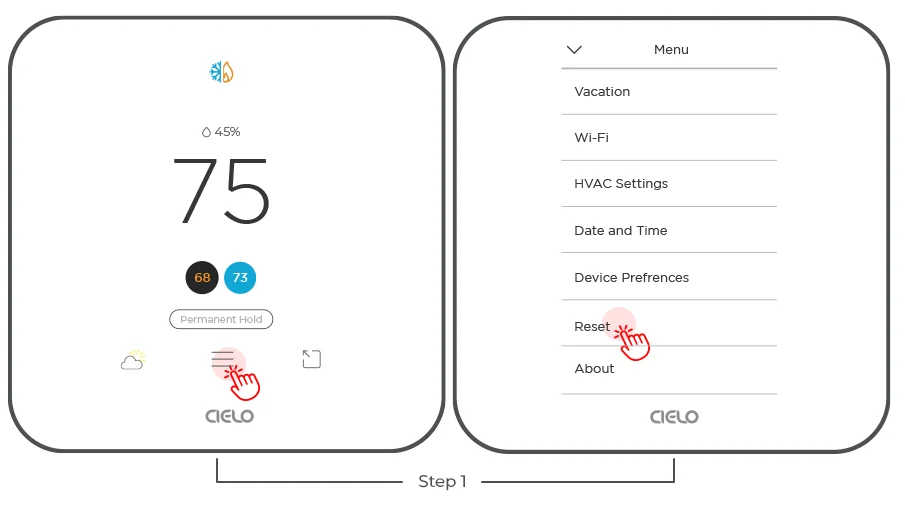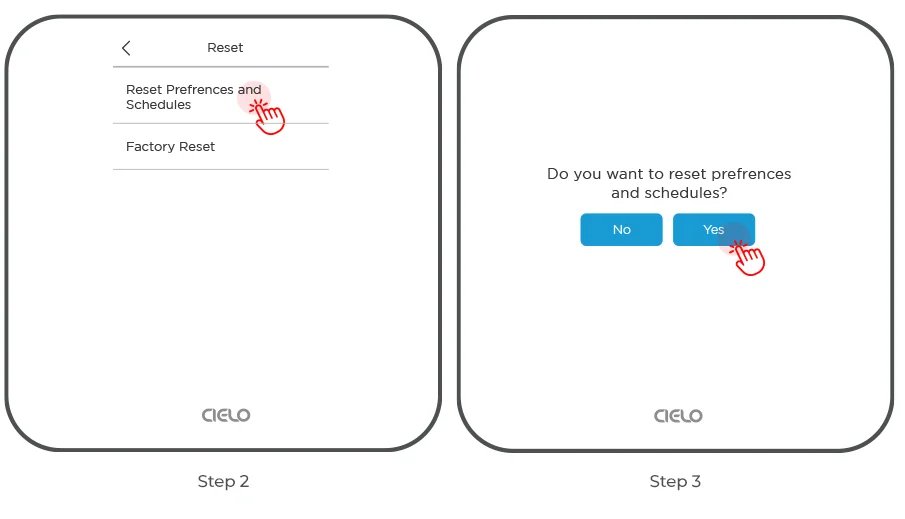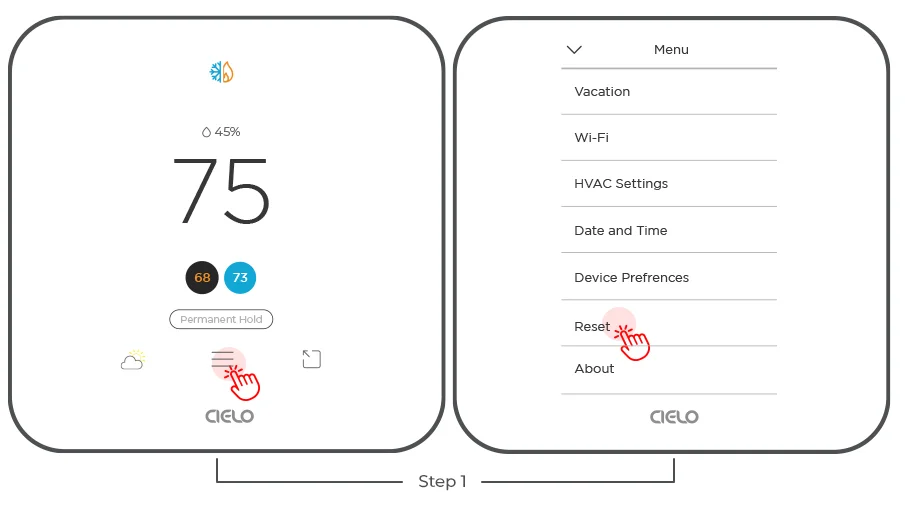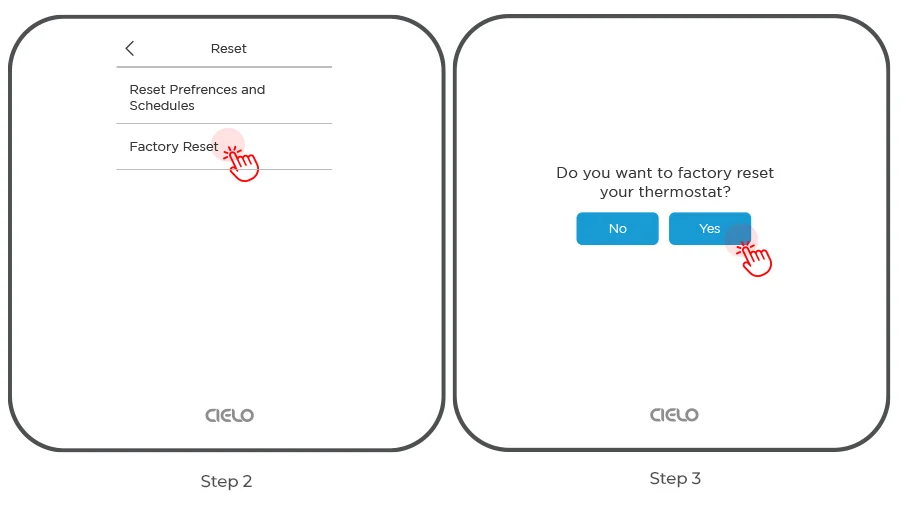
Key Takeaways
- A thermostat reset restores the thermostat to its factory settings.
- Resetting your thermostat can resolve glitches and syncing issues.
- Reset methods vary by thermostat type and model.
Heating and cooling account for nearly half of the average American household’s energy costs, totaling over $900 annually. Being smart about your temperature control can help reduce expenses while maintaining a comfortable living environment. That’s where your thermostat comes in. A thermostat is crucial in maintaining home temperature, but oftentimes, all blame is put on the aircon unit when the indoor temperature seems off. In most cases, that’s because your thermostat is having trouble communicating with the HVAC system, and all you gotta do is just reset your thermostat.
A reset brings back the default (or factory) thermostat settings and can help solve connection or programming problems. You can also try resetting the thermostat if it is showing incorrect readings. It is also useful in case you are moving and want to use the device in a new home, or you are leaving the thermostat behind and want to remove all your personal information.
Even if you are not having issues, a thermostat reset is recommended every once in a while to keep the device working efficiently and avoid any possible future problems.
Here’s a detailed guide on how to reset your thermostat, be it smart, programmable, or mechanical.
What is the Difference Between Thermostat Reset & Restart
These two options may seem similar; however, there’s a big difference.
The thermostat reset process erases your saved data, such as your HVAC configuration, temperature schedules, timer, location, or other settings. It basically brings it back to its original condition, just like when you first bought it. In case of resetting, you will have to go through the whole setup process again. Most thermostats have a reset button that is specifically designed for this purpose.
The restart option, on the other hand, retains all your settings and is similar to rebooting a computer. It can be helpful if your thermostat is stuck and is not responding.
When to Reset a Thermostat?
Here are some situations when you should try to reset your thermostat:
- When your thermostat stops working properly due to a glitch, faulty controls or is out of sync with your unit, resetting can help. Sometimes, when your thermostat isn’t reaching your set temperature, it can also be a calibration issue. Check this detailed guide on how to calibrate your thermostat.
- You have experienced a power outage that affected the electricity supply to your home. The abrupt shutoff prevents the thermostat from sending a signal to your AC unit when the power is restored.
- You will also need to reset your thermostat if you are giving it to someone else to clear all your data. Also, if you are moving, factory rest is required to be able to use the thermostat in another location.
- Resetting the thermostat can also help if your device is stuck in cool or heat mode.
- When you recently changed the batteries of your battery-operated thermostat, it still did not work.
- It’s been a while since you performed a thermostat factory reset. It is recommended that you reset your thermostat once in a while. This helps to clear all the unessential settings and prevent future issues. Generally, you will start experiencing issues with your device, indicating a reset is required.
General Thermostat Resetting Methods
Here are some general resetting options that work with various thermostat types. You can also try some of these tips and tricks if your thermostat reset button isn’t working or your thermostat lacks a reset button.
- Remove Batteries – If your thermostat is battery operated, remove the batteries, wait for 5 seconds, and then put them back. Just make sure they are working properly and do not require replacement.
- Flip the Batteries – Install the batteries backward such that the negative sidelines with the positive terminal and vice versa. Wait 5 seconds, then reinstall the batteries correctly to reset. This method can also help if your thermostat isn’t working after replacing batteries.
- Switch off the Thermostat – While it will not reset the device, it will help it forget the temporary settings. For instance, if there are glitches or any issues stored in the short-term memory, it can help remove them. Turn your thermostat off and then wait for at least 30 seconds before turning it back on.
- Switch off Power at Circuit Breaker – If none of the above methods work, try switching off the circuit breaker power for a few minutes. Turn it on and then check whether your thermostat has been reset.
Related: Thermostat Changes Set Temperature on Its Own? Find Out Why
Resetting Your Thermostat
The resetting procedure can be different depending on your model. Therefore, before proceeding, it’s best to refer to your manual to find the correct guidelines.
If you can’t find your manual, try searching for it online. You will need a model number to find the information online. Check it on the back of the wall plate or the product packaging if you still have it. Once you have the model number, search in this manner – [MODEL] [PRODUCT] Manual FAQ PDF. Replace the model with your model number and product with the type of thermostat you want. If you can’t find the model number, search for a similar model online and follow its instructions.
How to Reset a Smart Thermostat

Before resetting a smart thermostat, record all your settings so you can easily restore them. Note down your wire settings, safety temperature, scheduling, and any other data you may require for future reference.
In some models, the thermostat will ask if you want to keep certain information or want to erase all the data. You can choose to keep your scheduling info, Wi-Fi network, etc., depending on your smart thermostat model. If you decide to remove all the data, you will have to set it up again, just like you first installed it.
- Go to your thermostat settings menu.
- Find the factory reset option and tap on it to confirm.
- Once complete, all of your settings will be removed.
Equip your HVAC system with smart features and achieve the perfect balance between comfort & savings.
Learn more
How to Reset a Cielo Smart Thermostat
Cielo Smart Thermostat provides two reset options: you can either reset only your preferences or perform a full factory reset.
Resetting Preferences and Schedules
Resetting Preferences and Schedules will delete all the current settings and preferences, including schedules, hold settings, and motion detection.
Step 1: Go to ‘Menu’ and select ‘Reset’.

Step 2: Select ‘Reset Preferences and Schedules’.
Step 3: Tap “Yes’.

Factory Reset
By selecting Factory Reset, your thermostat will be completely erased, restoring it to its factory settings.
Step 1: Go to ‘Menu’ and select ‘Reset’.

Step 2: Select ‘Factory Reset’.
Step 3: Tap “Yes’.

How to Reset a Programmable Thermostat
Here is the step-by-step guide on factory resetting your programmable thermostat.
- Switch off your thermostat.
- Open the battery panel. If it’s on the backside, you will have to remove the thermostat from the wall.
- Remove the batteries and insert them backward. Wait for 5-10 seconds.
- After that, insert the batteries correctly.
- Then, turn on the thermostat and check to see if it has been reset.
How to Reset a Digital Thermostat
Resetting this device is simple. Here’s how to do it:
- Press and hold the menu button.
- Scroll to go to the reset button.
- Select reset thermostat and confirm. This will perform a complete reset.
- If your thermostat has a recessed reset button, press it with a paperclip for 5 seconds and then release it.
- If you have a battery-operated thermostat and reset mode doesn’t help, try taking out the batteries for 5 seconds and then putting them back in.
How to Reset a Mechanical Thermostat
Before proceeding to reset your mechanical thermostat, take off the cover and make sure everything inside looks good. As these devices are not battery-operated, they need a circuit breaker reset.
- Turn off the thermostat.
- Go to the circuit breaker that powers your AC unit and turn it off.
- Wait 30 seconds before turning on the breaker.
- Your thermostat will be reset completely.
How to Reset Your Low Voltage Thermostat
Low-voltage or line-voltage thermostats are mostly used with baseboard heating or electric furnaces.
- Turn off the thermostat and remove its cover.
- Use a soft brush to clean the components inside.
- After that, set the thermostat to the lowest temperature.
- Clean the thermostat again.
- Then, set the heating temperature high and clean the thermostat again.
- After that, set your preferred temperature.
How to Reset Your Air Conditioner Thermostat
- Turn off your AC unit, and also make sure that the thermostat is off.
- Find the circuit breaker box and controls for your AC unit.
- Look for labels of your AC unit on the breaker box.
- Flip the breaker to the off position.
- Wait for 30 seconds and turn it on. This will return your thermostat to default settings.
- After that, turn your thermostat and the unit back on. Then, wait for the HVAC unit to start cooling/heating your home.
The Bottom Line
When your thermostat starts behaving erratically, or there is a connectivity problem, resetting is an easy method to fix these issues. The method may differ depending on the type of thermostat, so be sure to refer to your manual for proper guidelines. In addition to a reset mode, replace your batteries or switch the device off and then turn it on. By taking a few minutes, you can ensure that your home is always at a comfortable temperature and that you’re not wasting money on unnecessary energy bills. Here’s a helpful guide on reducing your AC costs.
If all else fails and you can’t get your thermostat working properly no matter what you do, it may be time to call in a professional. If you get the diagnosis of a faulty thermostat that requires replacement, it’s best to replace your existing device with a smart thermostat model. Smart thermostats provide numerous benefits, such as the ability to control your AC using a phone, set schedules, track energy usage, and so much more.








